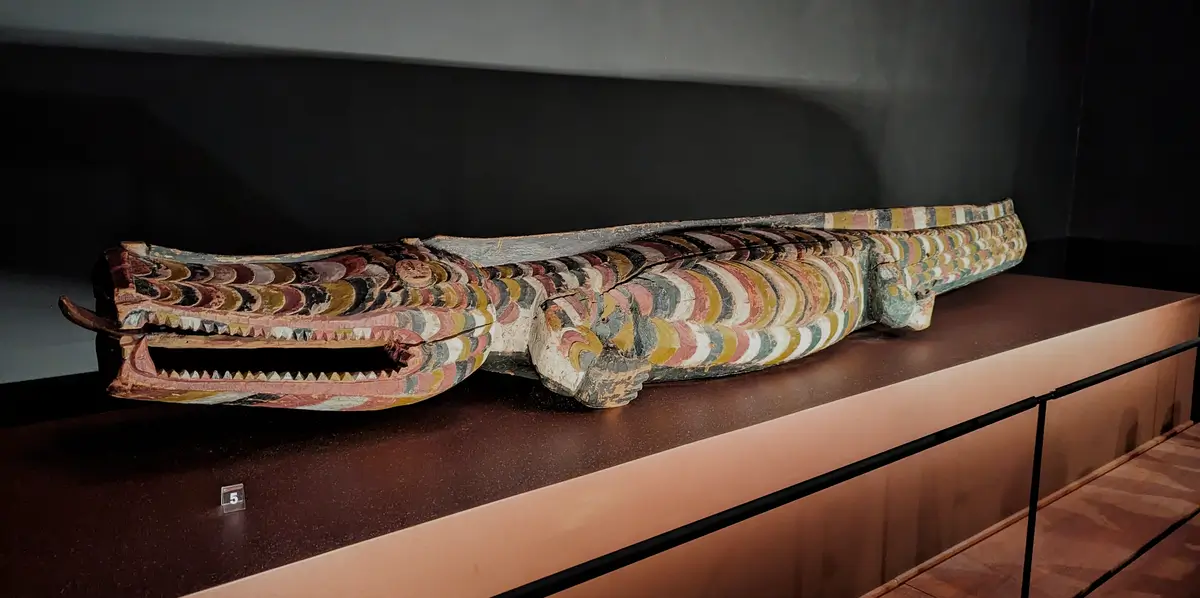Discover the Significance of Borneo Cultures Museum
Discover the Significance of Borneo Cultures Museum
Blog Article
Delve Into the Remarkable World of Borneo's Cultural Heritage: A Comprehensive Guide to the Cultures Gallery Experience
Submersing oneself in the detailed tapestry of Borneo's cultural heritage belongs to beginning on a voyage via time and practice. The combination of aboriginal people, traditional inventions, fascinating performances, and historic stories housed within the boundaries of the island's museums uses a peek into a globe including dynamic personalizeds and extensive traditions. As site visitors go across through these repositories of society, they are beckoned to discover a world where past and existing intermingle, inviting contemplation on the durability and splendor of Borneo's diverse heritage.
Aboriginal Tribes of Borneo
Borneo is home to over 50 aboriginal tribes, each with unique cultural practices and customs that have been protected for generations. Among these people are the Iban, recognized for their standard longhouses and intricate tattoos where multiple families live.
These aboriginal people play a crucial role in preserving Borneo's abundant social tapestry. Visitors to Borneo have the possibility to engage themselves in the unique way of livings of these people via social excursions, homestays, and community-based tourism campaigns.
Traditional Inventions and Artifacts

One famous example of typical handicrafts in Borneo is the manufacturing of woven goods - Borneo Cultures Museum. Experienced weavers utilize all-natural fibers like bamboo, pandan, and rattan entrusts to create complex baskets, floor coverings, and accessories adorned with vivid patterns that hold symbolic significances within the neighborhood
The art of woodcarving is one more considerable element of Borneo's conventional handicrafts. Artisans carve elaborate layouts into various sorts of timber to create masks, sculptures, and music instruments that not just offer functional functions but additionally hold social value, typically depicting folklore or spiritual ideas.
Moreover, Borneo is renowned for its beadwork, with artisans carefully crafting grains from products like glass, seeds, and shells to create jewelry, garments embellishments, and decorative items that showcase the area's vivid visual practices. These conventional inventions and artifacts not only act as tangible expressions of Borneo's cultural heritage however additionally offer understandings right into the neighborhoods' beliefs, values, and way of living.

Cultural Performances and Festivals
With an ingrained connection to their social traditions, the communities in Borneo come to life through vivid social efficiencies and events that celebrate their heritage. These occasions showcase the rich diversity of Borneo's ethnic groups, each offering unique dancings, music, and routines that have actually been passed down with generations. One of the most renowned celebrations is the Gawai Dayak, commemorated by the Dayak individuals to mark the rice collecting season. During this festival, traditional music loads the air, intricate dancings are done, and sophisticated standard outfits are put on. An additional significant event is the Pesta Kaamatan, commemorated by the Kadazandusun area to appreciate for the rice harvest. This event includes cultural performances, consisting of the Sumazau dance, and typical sports like the bamboo dancing. Visitors to Borneo can immerse themselves in these festivities, acquiring a much deeper understanding of the area's cultural heritage and experiencing the cozy friendliness of its individuals. Cultural efficiencies and festivals work as a dynamic suggestion of Borneo's rich cultural tapestry and the value of preserving these customs for future generations.
Historic Stories and Artefacts
Discovering the historical narratives and artifacts of Borneo provides a fascinating glance right into the region's rich past and social advancement. Borneo's historical tapestry is woven with diverse impacts, mirroring the interactions between indigenous tribes, Chinese investors, European colonizers, and Malay sultanates. The artefacts located in Borneo showcase this detailed background, varying from conventional crafts like detailed beadwork and woodcarvings Borneo Cultures Museum to historical prizes such as old ceramic and tools.
Among one of the most engaging aspects of Borneo's historic stories is the conservation of oral customs gave through generations. These tales supply insights right into the ideas, custom-mades, and day-to-days live of Borneo's residents throughout the centuries. Furthermore, the artifacts unearthed from historical sites offer concrete connections to these stories, enabling visitors to witness the product society of past societies firsthand.
Contemporary Cultural Conservation Initiatives

Moreover, curricula and social exchange tasks play an essential role in raising awareness regarding the importance of preserving Borneo's one-of-a-kind cultural heritage. By engaging institutions, museums, and the broader neighborhood in discussions and tasks that celebrate Borneo's varied cultures, preservation efforts can gain momentum and assistance for lasting sustainability. Partnerships between governmental bodies, non-profit organizations, and local areas are important in driving these conservation undertakings forward, making certain that Borneo's abundant social heritage stays vivid and cherished for generations ahead.
Conclusion
To conclude, the social heritage of Borneo is diverse and rich, with native people, conventional inventions, social performances, celebrations, historic narratives, and modern conservation efforts all adding to its uniqueness and significance. Site visitors to Borneo's social galleries can acquire a deeper understanding and recognition of the area's social heritage, permitting a much more immersive and enlightening experience.
Submersing oneself in the detailed tapestry of Borneo's social heritage is comparable to beginning on a trip through time and custom.With a deep-rooted connection to their cultural customs, the areas in Borneo come active via dynamic social performances and celebrations that commemorate their heritage. Cultural efficiencies and events offer as a lively reminder of Borneo's abundant social tapestry and the value of maintaining these practices for future generations.
In addition, academic programs and social exchange activities play a critical function in raising recognition concerning the relevance of maintaining Borneo's unique social heritage. Cooperations between governmental bodies, non-profit organizations, and local neighborhoods are vital in driving these preservation endeavors ahead, making sure that Borneo's abundant social heritage remains vibrant and treasured for generations to come.
Report this page